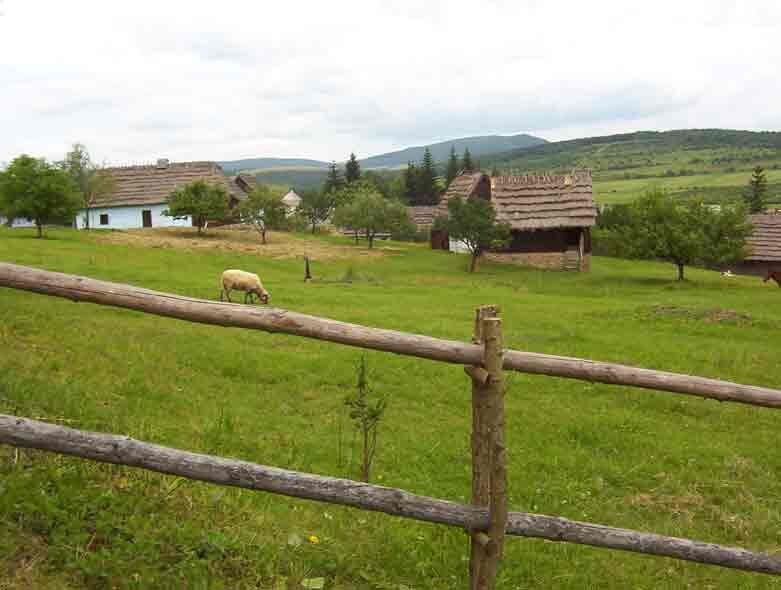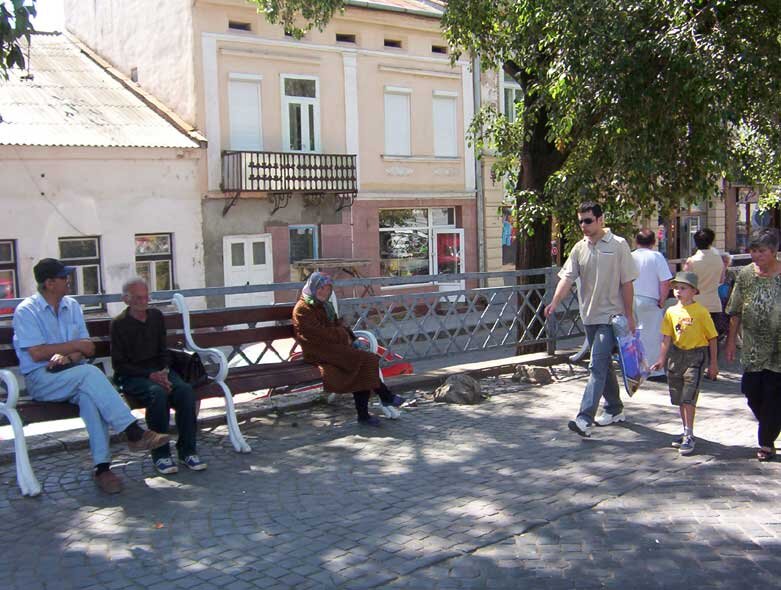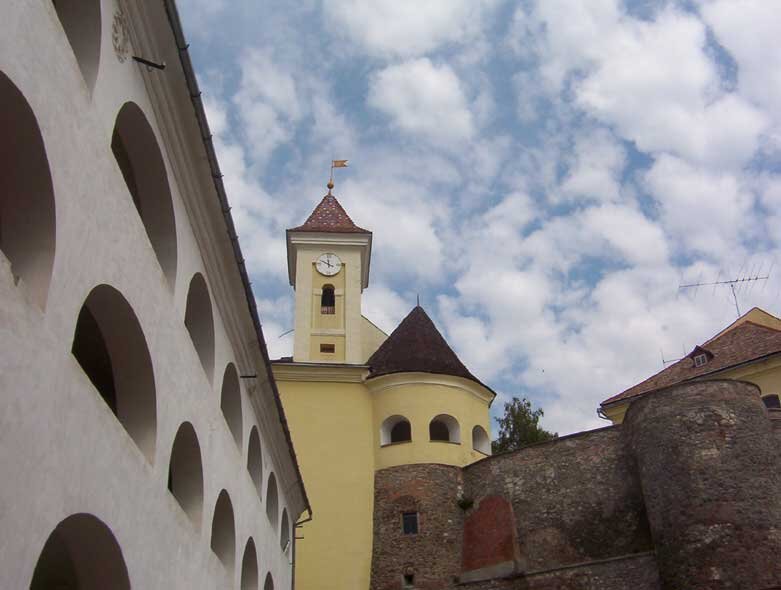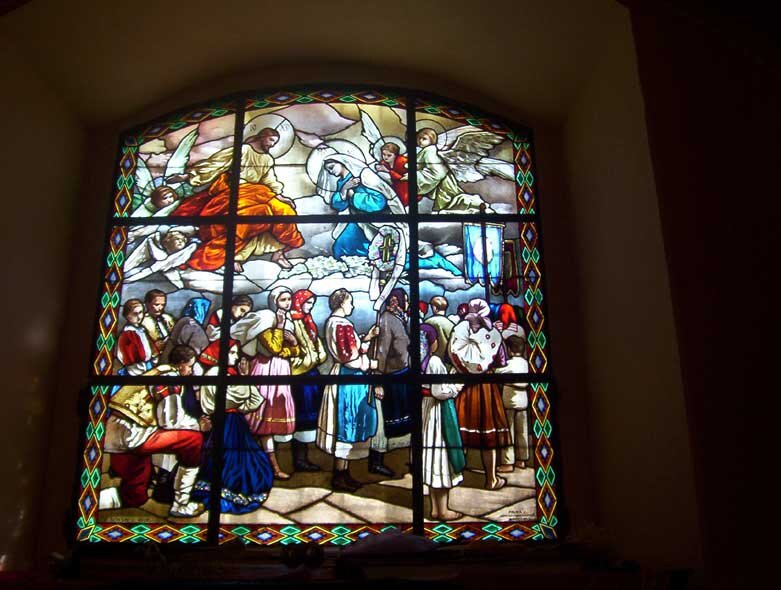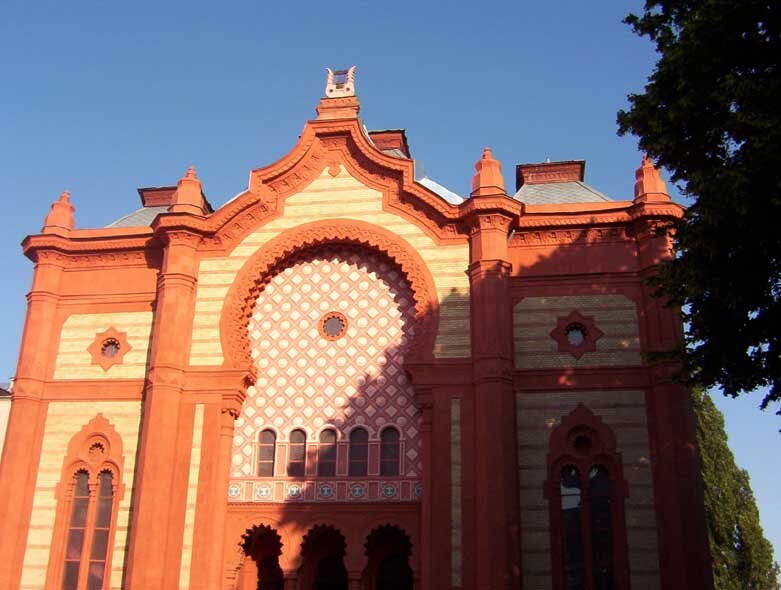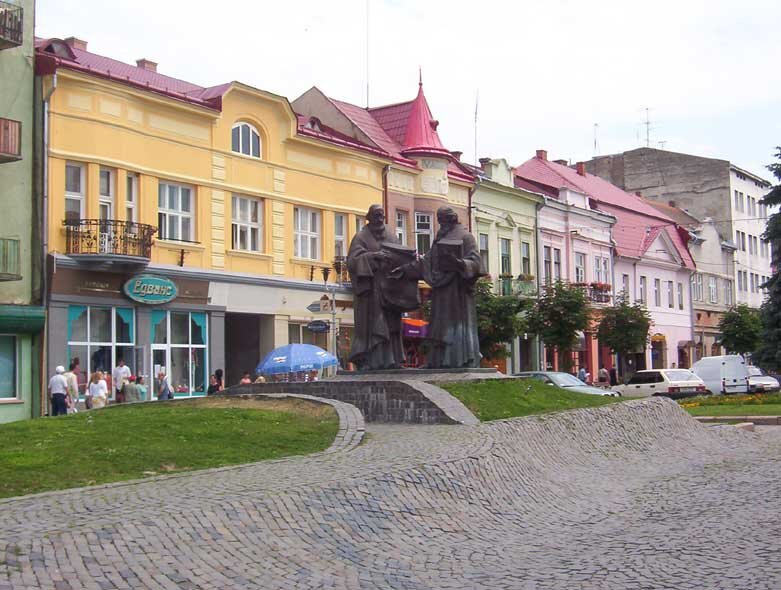Back to the Beginning
When I began the search for my family's ethnic identity, I had never heard the words Rusyn or Lemko, thought Central Europe was Eastern Europe and, if asked, would have placed the Carpathian Mountains somewhere inside Romania.
Our family knew the familiar story. Our grandparents were from Galicia in the Austro- Hungarian Empire which no longer existed. The area they were from was now somewhere in Poland--but we were not Polish. If pressed, we would say we were Russian, for our family was Russian Orthodox, but we also knew we were not really from Russia. We were far more sure of what we were not, than what we were.
The research on our family and the Rusyn people has been fascinating. After three years, helped by so many kind people who had shared their own family research on the Internet, we produced The Pelak Chronicles, 130 pages of family history and photographs which honored our immigrant grandparents and explained our ethnic identity and religious background.
The next step seemed a natural progression-- to see where we had begun. I had learned that although our people had been dispersed, our ancestral villages still existed. Though my interest in the homeland was extremely high, my husband was far less than enthusiastic about driving around Eastern Europe without any language skills or real knowledge of the area.
Our visit was made possible through participation in the 2004 Carpatho-Rusyn Society Heritage Tour. It would be impossible to imagine a more convenient way to get an overview of one's ancestral area or to acquire more compatible traveling companions. Although my research had indicated that our family was Lemko-Rusyn and one CRS trip was going to cover Lemko geography and history, I chose the second more comprehensive trip because, after all my research, I wanted an overview of the areas in which the Rusyn people had settled. The trip included stays in Slovakia, Poland and Ukraine-the three major areas of Rusyn history.
Slovakia
In Slovakia, we stayed in Presov, the center of Rusyn culture in that country. A city of considerable beauty and increasing prosperity, Presov had emerged from a grayer, grimmer time under Communism and restored many of its lovely baroque facades with warm, pastel colors.
Side trips to selected destinations (Levoca, Kosice, Medzilaborce and Bardejov) sometimes went through Rusyn villages of small, well-kept homes, some with stork nests on their chimneys, in which our people lived and worked.
Visits to skansens (outdoor musums) in Svidnick and Bardejov and an icon museum in Badejov offered deeper insights into our ancestors' daily life and religious faith.
Skansens
Icon Museum
Our guide indicated that that Rusyns increasingly identified themselves as Slovakian in censuses rather that acknowledging their traditional Rusyn heritage. Trip participants met with Slovakian-Rusyn relatives and reported happy visits with family they had never before met. Invitations to visit America were extended with the hope that they would indeed take place. At times, there were also quiet, "Thank you, Grandfather," utterances which reflected the increased opportunities we have all had because of our grandparents' immigration to America
POLAND
In Poland, we stayed in Krynica, an old spa town less than one hour from the villages I had come to visit--the purpose of our trip. Our guide for this part of the trip was Petro Trochanovskyj, a Lemko poet and a cantor in the Gorlice church which also serves St. Michael the Archangel in Pielgrzymka.
Gorlice Church
Beskid Niski landscape
When the day came to visit the villages, we met with our young driver, later christened Mario Andretti by my husband, and a sweet, inexperienced interpreter who was clearly unconfident about her skills. We sped off, retracing our route through Gorlice, through Konieczna, where we had entered Poland from Slovakia, and then to areas we had not before seen. The Beskid Niski landscape was beautiful-with foothills and haystack-filled fields blending seemingly innumerable shades of greens and yellow ochre under a sky of continually changing blue-grays. The colors of the landscape are still imprinted on my mind.
As we got closer to the village area, rows of very tall old trees beautifully lined both sides of the road with groups of children looking like picnickers with baskets seated beneath. Group after group seemed posed in a series of colorful tableaux. We learned they were mushroom-sellers and I wished we could stop as we hurtled by-- passing horse-drawn hay wagons at alarming speed.
We turned off of the main road entering Pielgrzymka and found the home of our guide, Eugene Dziadosh. Though he was feeling ill that day, Eugene and his wife warmly welcomed us and, after he brought in his cow, Crassula, for milking, we began our tour. He told us that there were eight Rusyn families left in the villages and among the names mentioned were Krill, Serniak and Pawlak The Dziadosh family and three other families had escaped deportation when, after being ordered by Polish Communists soldiers to the trainyards in Jaslo for the third time, trains once again failed to arrive to remove them. They were then allowed to stay unlike the many families who lost their homes and property during this sad time. As we left Eugene's street for the main road, he pointed out a Talerhof memorial, one of several in Lemkovyna, which commemorated the Rusyns who lost their lives in this early internment camp.
Talerhof memorial
Gene, who was church president of St. Michael the Archangel, stopped at a farmyard and picked up enormous keys to the church. There was no road leading to the church and we drove across a small field. Our driver was a good sport as his car bounced over muddy ruts and holes. I had seen many pictures of this church and stood disbelieving that I was actually seeing it in person. St. Michael's was at the beginning of a badly needed restoration; its interior had an almost overpowering turpentine-smell and was sheathed in plastic. I stayed behind as the others fled the fumes, peering around the plastic at frescoed saints and peeling icons, the feeling of being in a sacred place profound.
Before Restoration
St. Michael the Archangel
Pielgrzymka
Before Restoration
St. Michael the Archangel
Pielgrzymka
Afterward, we drove to the nearby church cemetery-- again across a rutted field. We walked through ankle-high grasses and briars around the restful site, looking at the tilting Orthodox crosses marking where generations of our ancestors were buried. How many more rested there unmarked we would never know.
Next we visited an old farmstead where we were graciously greeted by 77 year old Mrs. Klemash who had returned to Wola Cieklinska long after her deportation to Ukraine. My son had photographed her on his 2001 visit and I felt I knew her as she, leaning on the stout sticks which supported her walking, kindly offered us tea. Her home in which the adjacent stable for her cow, separated only by a wall and an entryway, was under one roof with her living quarters, was how our ancestors lived. This architecture permitted them to care for their animals in the depth of the Carpathian winters. I thought, not for the first time on this trip, how very, very much we take for granted.
We next visited the wooded, hilltop cemetery of St. Demetrius the Great Martyr destroyed by the Communists after the Lemko deportations. This is the Wola Cieklinska cemetery in which I believe our family ancestors are buried. I saw the broken headstone and its crucifix that Eugene had told my son had the Pelak surname inscribed on it. There was an air of stillness and sanctity as we looked at the broken stones and crosses tumbled among tree roots and rocks.
We stopped also to see one of the three military cemeteries left in Wola Cieklinska after the massive loss of life in the nearby battles in Gorlice and other towns during the first world war. This one was for German soldiers (their names are listed on the Internet). We did not have time to see the two others and I hope to get photographs of them for this website from future visitors.
We next had an unexpected stop. Eugene took us to the home of relatives that my cousin, Dymitr had visited 25 years earlier. I did not know if the family was still there and they did not know we were coming. Once again we were warmly welcomed. We were able to share photos that had been taken on the earlier visit and they shared photographs of family members who had been deported to Ukraine and never been able to return.
On our return to Eugene's home, with the same generous hospitality that was extended to us throughout the trip, his wife treated us all to lunch before we began our hurried trip back to Krynica. Among the treats was cottage cheese contributed by Crassula.
Back at the hotel, I found I was exhausted. I had not realized the depth of the feelings evoked by these sights. I have though of this visit many times since and still have not incorporated all these feelings into my memories.
The day after our village trip, our tour left for Ukraine, stopping at the Museum of Lemko Culture in Zyndranova, The route serendipitously took us once more through the lovely Beskid foothills of our ancestral villages, past the tall old trees, past the mushroom-sellers.
UKRAINE
Ukraine
In Ukraine, we stayed in Uzhorod, the site of one of the "union" which changed the primacy of the Rusyn people's religion from Constantinople to Rome. This part of the journey, beginning with the border entrance into Ukraine, was far more challenging than our Slovakian and Polish stays. Grayer, grimmer, with an 80% unemployment rate, Uzhorod, with its crumbling Communist-era buildings, reflected a legacy of repression and corruption.
It had the same impressive elements of the other cities we visited: historic castles, cathedrals, concert halls and museums-- but as yet had been unable to adequately maintain this heritage. A side trip to Muchevo gave a glimpse of another Ukrainian city emerging from a shared Communist legacy.
Here, it was far more problematic for people attempting to find family, as trip participants found that unreliable cars, poorly maintained roads and absence of signage-- in any language-- greatly complicated travel. It was the hope of our heritage tour visitors that the Ukrainian-Rusyn people would be able in the future to build a country of increased prosperity and comfort.























